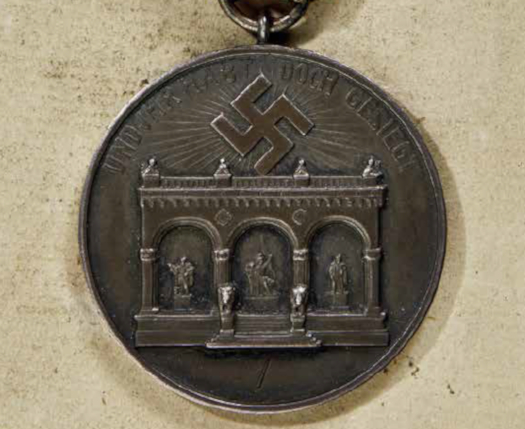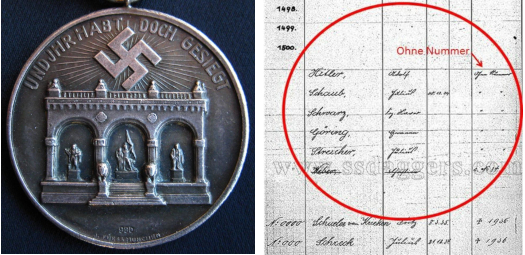|
|
|
October 5, 2019
- Droog Magazine periodical for investigative
journalism 2019| Auctions | Press | Certificates of Authenticity
Boomtime for Hitler memorabilia
The Andreas Thies auction house, which sold the objects last week, described them as “truly some of the most important historical artefacts from the personal possession of Adolf Hitler ever offered at an auction.” It
said they came from a collection of items taken from
Hitler’s
private apartment on Prinzregentenplatz Square at
the end of April
1945 by US Lieutenant Philip Ben Lieber of Lousiana,
the catalogue
said. Other treasures sold included Hitler’s “Blood
Order”
medal, one of the top decorations awarded by the
Nazi party, which
went for €250,000. At an auction in Munich in 2016, a uniform jacket belonging to Hitler was sold for around €300,000 while Hermann Göring’s silk underpants fetched €3,000. Private collectors with money to burn are willing to shell out hundreds of thousands of euros to satisfy a burning fascination with the Nazi era that appears to override any doubts about whether the objects are genuine, said experts. Bart Droog, a Dutch journalist whose tip-offs led police to confiscate 67 paintings falsely attributed to Hitler from three auctions in Germany this year, said Nazi items were fetching “insane” prices. “The prices are rising, and so is the amount of ‘genuine’ Hitler artefacts,” Mr Droog told The Times. “Prices will keep on rising as long as the media report on these auctions without mentioning that these items are very likely to be fake.” Andreas Thies, the auctioneer who sold the items and many others in the auction in Nürtingen, southwestern Germany, admitted that the market is flooded with fakes and dubious dealers — but said he was “100 percent convinced” his were real. The authenticity of the objects was backed by documents dating back to 1945, he said. “I’m not saying we can’t be wrong at times, no one is infallible, but we do check very carefully,” he told The Times. “We only accept items whose origin is proven and secured. One has to be very vigilant. When items are handed to us we verify the provenance and then examine them scientifically.” “We check under the microscope and in other ways whether a medal is original, and whether the engraving is original. Of all the items sent to us we send more than half back because we don’t believe they’re real. “We
guarantee the authenticity of everything we offer in
our auction and
I believe we are the only auction house in the
market, at least in
Germany, to do so.” An authentic 'Blood Order', with
documented evidence that Hitler's real 'Blood
Order' was unnumbered. “Collectors will, and always have, believed what they want,” said Mr. Rivett, who exposes fake militaria. “And if there is a grand fable attached to the item, then all the better.” Other artefacts sold included a black leather coat that belonged to SS Oberstgruppenführer Sepp Dietrich, Hitler’s bodyguard who rose to become a tank army commander — it was bought for €26,000. The Bavarian government said sales of Nazi memorabilia “satisfy a greed for sensation rather than serving a scientific interest.” But Mr. Thies, who sells historical artefacts from a range of epochs, rejected the criticism. “This is a serious market, the buyers aren’t Nazis. Neo-Nazis can buy copies elsewhere much cheaper.” “These relics are historic testimonies and if there were no trade in them and they didn’t cost money, many would probably be lost over time. In 100 years how do you want to convey history to young people if nothing survives from it?” It’s
a moot point. “What can you learn from a leather
jacket, a Nazi
medal or Hitler’s dirty underpants?” said Mr. Droog?
“Younger
generations are better to visit the concentration
camp sites or the
war graves – that’s were history is conveyed.” © David Crossland, 2019 |
| |
| |


